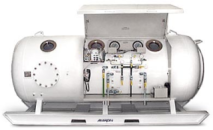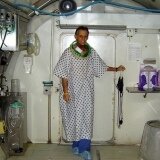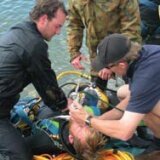Skin Graft And Flaps (Compromized)

A skin graft is a transplanted tissue without its blood supply which is transferred during skin grafting surgery, a type of surgical grafting where transplantation of skin is performed.
A graft consists of a section of skin including epidermis and dermis of variable thickness that has been completely separated from its blood supply and transplanted to a recipient bed.
Reconstructing complex wounds is accomplished by shifting or transferring tissues to the wound from a different part of the body.
The area from where the skin is borrowed is called the donor site.
Skin Grafts Categories
There are two general categories of grafts in regards to a thickness: full thickness and partial thickness grafts. A full thickness grafts contains the dermis and the epidermis. A partial thickness skin graft includes the epidermis and only a small portion of the dermis. The split thickness skin grafts range from 1/1,200 to 1/2,000 of an inch in depth. Thicker grafts are less prone to wound contracture. In general, full thickness grafts are used in places where less wound contraction is desired, such as the face.
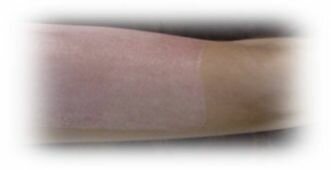
Photo courtesy of "Burned Leg"
Skin Graft Survival
Skin grafts survive as oxygen and nutrients diffuse into them from the underlying wound bed. Long-term survival depends on a new blood supply forming from the wound to the graft. When the wound bed does not have enough oxygen supplied to it, the skin graft will at least partially fail.
Common causes for this are previous radiation to the wound area, diabetes mellitus, and certain infections. In these situations, the availability of oxygen in the wound bed can be increased with hyperbaric oxygen therapy (HBO2) in preparation for skin grafting. Additionally, HBO2 can be used after skin grafting to increase the amount of the graft that will survive in these compromised settings.
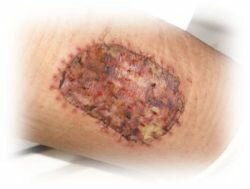
Photo courtesy of Minimole
Once the graft has been harvested, it becomes separated from its blood supply and must revascularize to survive. The vascular bed is recreated in a three-step process: imbibition, inosculation, and revascularization. Imbibition occurs in the first 24 to 48 hours. During this phase, the nutrients diffuse from the underlying wound bed to extracellular fluid and into the capillaries of the graft.
The graft begins to fix to the wound bed via fibrin bonds. Inosculation involves the alignment of the donor vascular buds with graft capillaries and establishment of circulation. Revascularization occurs when connecting vessels differentiate into arterioles and venules. Thicker grafts demand more blood supply and require a well vascularized recipient bed to survive. Wounds with exposed bone, tendon, or cartilage or with radiation damaged tissue offer a poor vascular bed.
There are several reasons for graft failure. The most common cause is loss of contact with the recipient bed because of hematoma, seroma, purulent material, and shearing. Meshing the graft helps to overcome the problem of fluid buildup underneath it. Shearing is caused by movement of the graft against the wound bed. This can be prevented by tie-down compression dressings created by interrupted sutures along the edge of the wound. The ends of the suture are left long in order to tie down a nonadherent dressing on top of the graft. The second most common cause of graft failure is infection. Wounds colonized with more than 1 ª 105 bacteria per gram of tissue will be less likely to support a graft.
Partial thickness skin grafts are most commonly harvested with the use of a dermatome, which is air driven or electric. Dermatomes can be adjusted for depth of cut as well as width of the skin graft desired. Full thickness grafts are commonly acquired by hand with a scalpel.The incision is made in an elliptical fashion to facilitate wound closure. Securing the skin graft to the recipient bed can be accomplished using staples placed along the circumference of the graft. In addition, interrupted chromic sutures can be placed within the graft to anchor it to the wound bed.
Non-adherent dressing as well as sterile absorbent gauze are then placed, and the dressing is left on for 5 days for split thickness grafts and 7 to 10 days for a full thickness grafts. Healing of a split thickness donor site results from epithelialization from epidermal appendages, such as hair follicles, sweat glands, and sebaceous glands that are left behind after the graft is taken. Healing occurs best in an environment that is moist and free from injury and contamination. The process may take up to 21 days. Full thickness donor sites leave no dermis or epidermal appendages behind and, therefore, must be closed primarily or left open to granulate and contract.
Skin Flap
A skin flap differs from graft in that it is a section of tissue that comes with its original blood supply. The blood supply of the flap is referred to as the pedicle. There are several Types of skin flaps:
- Local flap. When the skin flap is from an area close to the wound, for example, a wound on the lip may be repaired by a flap from the adjacent cheek.
- Regional flap. When the skin flap is not from the adjacent area, but is from the same region of the body, for example, a wound on the tip of nose might be repaired with a flap from the forehead.
- Distant flap. When a flap is from a different part of the body, for example, a wound on the hand might be repaired with a flap raised in the groin. A local flap repair is usually done in one operation, whereas regional and distant flaps need two or more operations. The second operation is needed to detach one end of the flap at the donor site, when the blood vessels have developed at the other end.
- Free flap. This is a distant flap, but the whole procedure is done in one stage by repairing the donor and blood vessels by microsurgery.
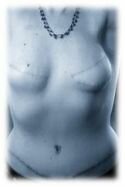
Skin Flaps also require oxygen and nutrients to survive. The outer, visible portion (usually skin) is furthest from the source of blood supply for the flap. This is the area most likely to be compromised by inadequate oxygen.
Factors such as age, nutritional status, smoking, and previous radiation result in an unpredictable pattern of blood flow to the skin. If a flap is found to have less than adequate oxygen after it has been transferred, HBO2 can help to minimize the amount of tissue which does not survive and also reduce the need for repeat flap procedures.
Hyperbaric Oxygen Treatment is neither necessary nor recommended for the support of normal, uncompromised skin flaps and grafts. However, in tissue compromised by irradiation or other cases where there is decreased perfusion or hypoxia, HBO2 has been shown to be extremely useful in flap salvage. Hyperbaric oxygen can help maximize the viability of the compromised tissue thereby reducing the need for regrafting or repeat flap procedures. A number of studies have shown the efficacy of HBO2 on enhancement of flap and graft survival in a variety of experimental and clinical situations.121
Share Your Story Related to Skin Grafts or Flaps!
By telling your personal story you are helping others to learn more about Skin Grafts or Flaps and possible treatment options. Your information may be of great value for many people. Help and be helped!
If you are a doctor – get more people knowing about You and your Clinic. Please contribute by posting an article sharing your experience in managing and healing Skin Grafts and Flaps or new clinical trials performed by your team.
What Other Visitors Have Said
Click below to see contributions from other visitors to this page...
Hi 




On 14 July, i.e. 6 weeks, 3 days ago, I had a SSTG (split skin thickness graft) on lower right medial malleoulus, lower right leg, which initially was …...
Compromised Skin Graft/Flaps Respond Well To
Hyperbaric Oxygen Therapy Not rated yet
As a Hyperbaric Safety director I see first hand how well compromised skin graft/flaps respond to hyperbaric oxygen therapy.
It is cost effective, …...
Ms Redding Not rated yet
My daughter suffered 8% body burns, deep 2nd and 3rd. Everything went great for the first six weeks, including the first week of her skin graft.
Then …...
